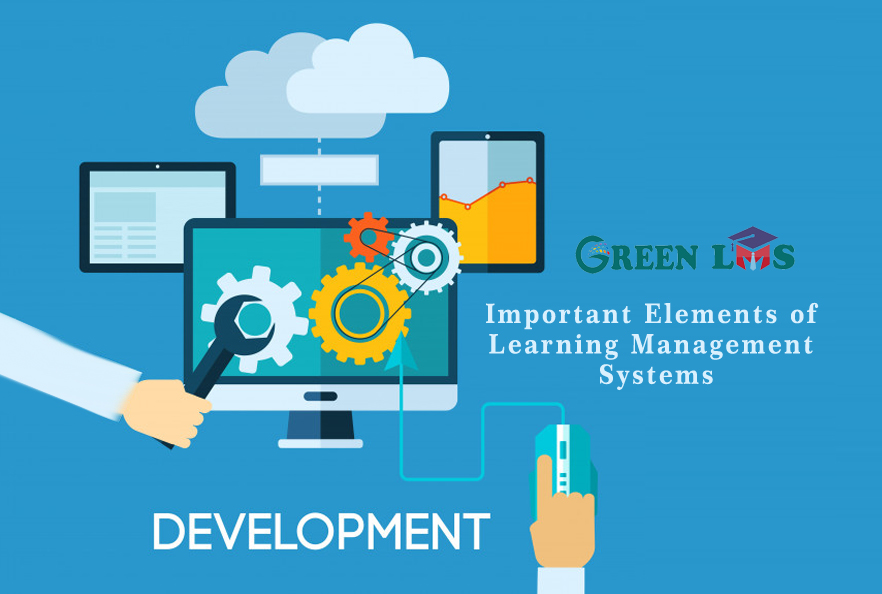
Choosing between various learning management systems should not overwhelm you. Find out about the essential LMS platform features here.
Utilize These LMS Features to Effectively Train Employees
What makes a good learning management system (LMS)? It’s easy to become disoriented when looking for the best LMS because there are so many options available today. A few features in a good LMS platform are always useful, even though every organization and course has different needs. What are the most important features to look for?
Must-Have LMS Platform Features for Employee Training
1. Simple, Clear User Interface
A straightforward, efficient user interface (UI) is undoubtedly the most crucial component of any learning management system. Any digital learning platform’s ability to engage students is key to its success. If the user interface (UI) is complicated, hard to use, or just plain confusing, adoption and enthusiasm will suffer. A good LMS must have an easy-to-use user interface, ideally with accessibility features. The text and fonts used throughout the website should be readable and clear to everyone, including those with vision issues. Features like descriptive audio can also help improve a website’s accessibility.
There should be a clear layout across the platform. For instance, users should be able to easily find their account settings and active courses. The same thing applies to the administrator and educator sides of the LMS. Courses should be straightforward to set up, and key systems like grading, progress monitoring, and class management should run smoothly.
2. Streamlined Course Management
Any LMS’s primary function is to act as a center for creating and managing courses. The course management system ought to be intuitive and well optimized. The system needs improvement if it takes a teacher ten minutes to add a new student after navigating nested menus.
The LMS should function properly for simple tasks like creating assignments, recording grades, and viewing student rosters. The instructor’s job should not become more difficult because of how well the teacher’s side of the UI functions overall. If the developer offers tutorial manuals and videos to assist instructors in getting started, that is especially beneficial.
3. Monitoring and Analytics
No LMS platform is complete without effective monitoring and analytics tools. These features allow instructors to track learners’ progress and identify ways to improve courses. A course designer’s reflection or an analysis of the performance metrics for the entire course is examples of evaluation tools. Whatever evaluation method is used, a good LMS should have features that simplify course evaluation, both during and after.
For instance, trainees in an on boarding program might have a diagnostic test to complete on the first day of training. The LMS might have a test analytics feature that allows instructors to see the most commonly missed questions on the diagnostic test. This feature indicates the topics that need the most attention in on boarding and training.
4. Options for Task Automation
Automation is a big help for instructors, especially when they’re managing courses with dozens of trainees enrolled. The best LMS platforms include options for task automation to simplify course administration and reduce the workload of instructors. This is often done using AI and machine learning tools. For example, with a large class size, it may take instructors a long time to notice a student is falling behind. Machine learning algorithms can autonomously recognize performance fluctuations that indicate a student needs help.
Furthermore, automated course data analysis using AI and machine learning can provide instructors with useful insights in just a few minutes. Even for everyday tasks, automation is helpful. For instance, instructors should be able to set up learning pathways that automatically sort a student into the next course once they finish a prerequisite course. Automated grading for simple tests and quizzes is another must-have.
5. Compliant With Privacy and Security Regulations
To make sure that apps respect everyone’s privacy and don’t jeopardize online security, software regulations are essential. A reliable LMS will follow relevant privacy and security regulations, like the ISO 27001 standards or the GDPR in Europe. The LMS developer should be able to show proof that they have a particular certification or that they have been confirmed to comply with a particular law.
LMS platforms should offer users some privacy and security options outside of laws and standards. For instance, users should have the option to request that their data only be shared with their employers or instructors if the developer is collecting cookies or other data.
6. Gamification Features
Over the past few years, Gamification has steadily grown in acceptance in both corporate and educational settings. It has been proven that incorporating elements from video games into the classroom is a highly effective way to engage students and increase enthusiasm. The best LMS platforms available today will have gamification capabilities or options for integrating with well-liked gamification platforms.
Gamification encourages students to learn by utilizing game elements like experience points and achievements. Gamification relies heavily on interaction. Students in a course might, for instance, be able to view a leaderboard that lists the students who have finished the most training modules in the previous month. Students are motivated to achieve goals and receive rewards through experience points and progress bars.
7. Easy Integration with Other Apps
Finally, a good LMS should be compatible with other apps, especially those that are frequently used in schools. A wide variety of efficient app integrations demonstrates that an LMS developer spent time learning about the requirements of instructors. LMS platforms should provide support for a wide range of file formats, including Word documents, slide presentations, spreadsheets, PDFs, and more, in addition to supporting related apps. The process for instructors and students to upload supplementary materials during a course is made simpler by the seamless integration of various file formats.
Choosing the Perfect Learning Management System
Learning management systems are widely available today, so it’s critical to know what to consider when selecting the best one. The top LMS platforms on the market right now have features that make learning easier and more convenient for both students and instructors.


